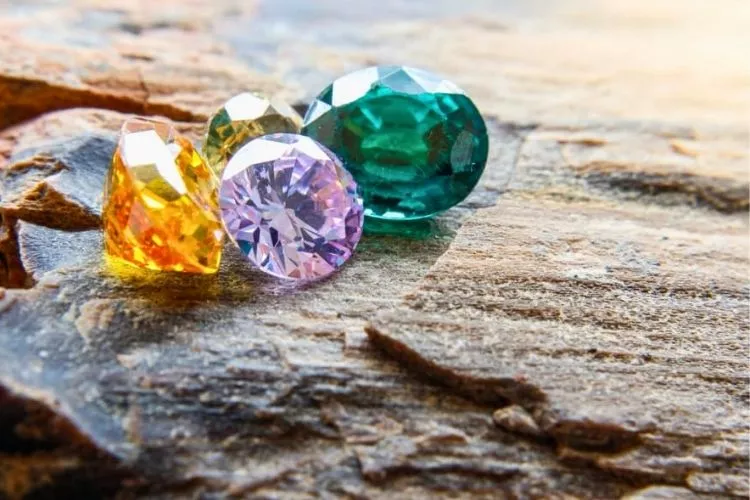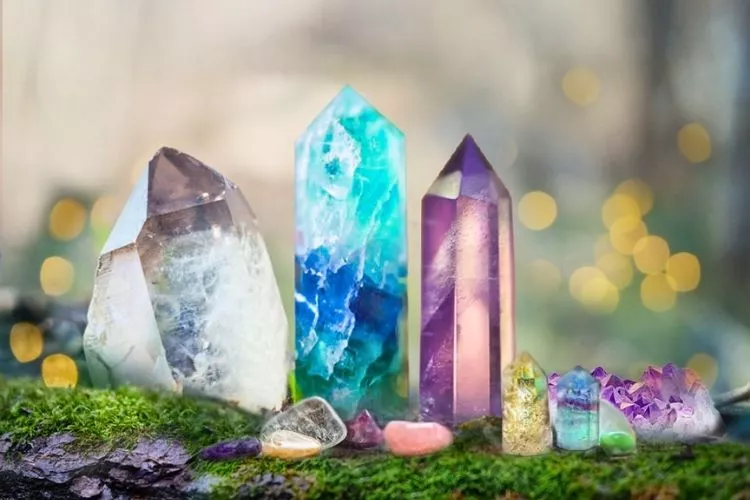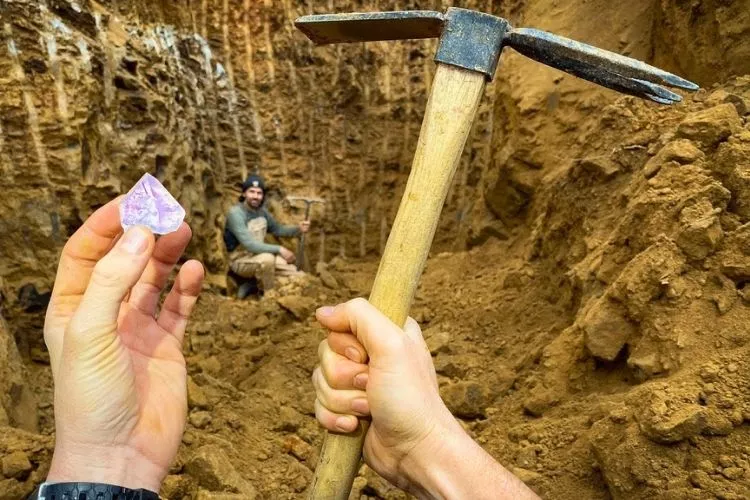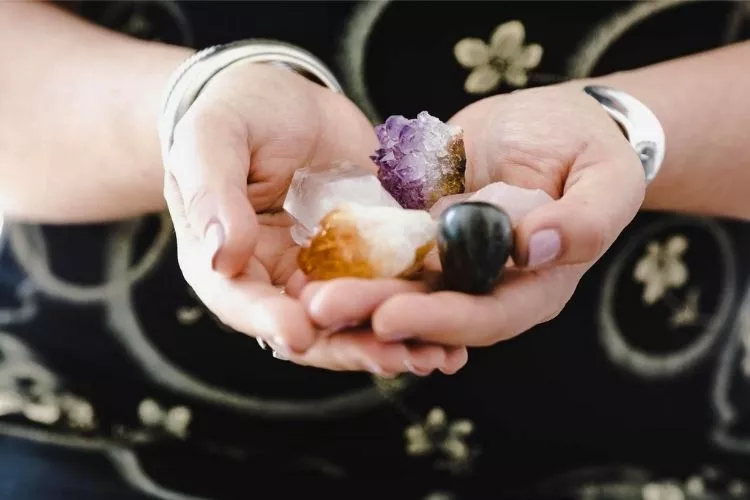Crystals have a market today because of their characteristics and other attributes, such as their ornamental, healing, and spiritual qualities. What if you could find a few crystals in your backyard, just under your nose? Well, it’s hard to believe this fact, but if your luck favors you, you might find some types of crystals, of which a few may have a high value in terms of monetary gains.
You may find crystals in your backyard mixed with rocks or gravel in the soil. The type of crystals found depends on where your yard is. In general, you may find crystals where profound rocks move upwards toward the earth’s surface. Let’s find out how to find crystals in your backyard.

How to Find Crystals in Your Backyard?
Searching for crystals requires a high level of patience, persistence, and strong determination. In addition, you need to equip yourself with various tools like a digger, shovel, pickaxe, sifter, protective gloves, etc.
First and foremost, identify the area where you can potentially find the crystals. Researching in your area to get insights into what crystals are popular there and what kind of soil they reside in will help you identify the spot. The most probable place where you can find crystals most of the time is a rocky area. You can also find crystals underneath tree roots.
You might need to have a magnifying glass with you to identify the crystals. You can use a sifter to separate crystals from other gravel. Ensure that you have a sifter of various sizes. It helps you when you have to deal with different soil types and gravel sizes.
Research the Types of Crystals Found in Your Area
Crystals are divided into various categories and are worldwide. Common crystals include

- Agate: Agate is available in U.S. western parts of and most backyards. It is abundant in areas of live lava beds.
- Amethyst: You may find them mostly underground, forming inside most caves.
- Garnet: Mostly found in Kenya’s Scorpion mine. In addition, you can find them in Arizona, Brazil, California, Carolinas, Colorado, Idaho, Montana, and Namibia.
- Jade: Mostly available in China, Guatemala, and Russia.
- Malachite: Comes from Australia, Congo, Gabon, Mexico, Namibia, and Zambia. Russia is known to have the largest deposits of Malachite.
- Obsidian: You can find them around volcanic rocky areas.
- Opal: 95% of global opal comes from Australia. The remaining crystals have been found in Brazil, Honduras, Mexico, and a few U.S. western parts.
- Peridot: These crystals are found mainly in Arizona deserts.
- Quartz: Quartz is one of the easily available crystals, with no geographical limits. It is present almost in every part of the world.
- Topaz: Brazil is home to most Topaz deposits.
- Tourmaline: is found mainly in Maine. Other deposits are available in Afghanistan, Brazil, California, and Pakistan.
- Turquoise: If you are living in U.S. southwest parts, you may find these crystals.
Before you try your luck with crystals in your backyard, a little research may come in handy to understand what types of crystals are common in your area. The type of crystals may vary depending on the geographical area. Therefore, you need to have a basic study of the crystal types in your region to have a high probability of finding them.
You may start your research by visiting state mining or mineral research departments. You can get considerable information about what kinds of crystals are common in your area. It will help you narrow down your search.
In the U.S., most crystals can be found in North Carolina or Arkansas.
Choose the Right Time and Weather Conditions
It’s crucial to plan the right time and weather conditions to ease the process of crystal finds. Since crystals may be small-sized, a bright sunny day helps you to find them effortlessly due to the clear visibility. In addition, avoid weather conditions like heavy rains or snow. These weather conditions hamper your visibility, and you fail to find crystals.
According to experts, an ideal time to find crystals is after a short spell of rain. The rain helps wash away all the dust, improving the clarity and visibility of the area. It helps you identify the crystals effortlessly.
Look for Natural Indicators
Natural indicators may help you locate crystals in your backyard. A backyard with a stream, lake, or river passing by is an ideal spot for searching for crystals.

Another indicator is a rocky area in your backyard. Rocks hold the crystals for ages. A backyard with a rocky area has a high probability of yielding crystals. Mineral-rich soil spawns crystals over the decades. A backyard rich in minerals may have a substantial deposit of crystals.
An area with a surface featuring fault lines and uneven elevation may also have crystals. You must pay attention to these natural indicators, as you can save a lot of digging and excavation work by working only in the area where finding crystals is possible.
Use the Right Tools
Let us understand the tools that will help you follow this guide regarding how to find crystals in your backyard. Using the right tools helps to find the crystals effortlessly, saving a substantial amount of time.
A shovel is one of the tools commonly used for digging. You can choose the type of shovel based on the soil type in your backyard and the size of the area you want to work on. To break the topsoil, use a simple hand shovel or trowel with a pointed or rounded cutting edge. A round digger shovel may work well if the topsoil in your backyard is soft or hard.

Digging up soil is no easy task. Therefore, you may require additional tools such as a garden spade, pickaxe, sifter, bucket, hand gloves, etc. These tools work well when breaking up compacted soil. Break hard soil and chip away rocks using a pickaxe. Sieve the soil using the sifter combined with a mining pan to find and filter out pebbles. Out of these pebbles, there might be crystals.
Don’t forget to equip yourself with a rock hammer or rock pick. They can help you chip hardened rocks away to free the crystals.
Take extra care while looking underneath the tree roots, in case any animal or reptile has made its home there. While digging, ensure you don’t harm the underlined electric or phone cables or rupture any sewage or water pipelines.
Know How to Identify Crystals
If you successfully dig out your backyard and find a few crystals, it’s crucial to identify them to justify your hard work. Hence, it is vital to understand the ways to identify crystals. Otherwise, you may have rocks or other minerals in your hand and mistake them for crystals.
Let’s understand a few ways to identify crystals.
1. External Shape
It’s easy to identify a crystal by inspecting its external shape. A crystal is a homogeneous solid with a lattice structure that defines its three-dimensional internal order. Use a hand lens or microscope to minutely observe the small crystals.

2. Color: variations
Color is the most prominent feature and is easy to identify with the naked eye. Here is a list of common crystals and their colors.
| Type | Color |
| Quartz | White, citrine yellow, purple, pink |
| Amethyst Crystal | Rich purple shade |
| Agate | White, gray, black, yellow, brown, red, lilac, pink |
| Topaz | Blue, green, yellow, orange, red, pink |
| Opal | White, yellow, gray, black, brown |
| Peridot | Green variances, yellow-green to blue-green |
| Obsidian | Black, brown, green, or tan |
| Garnet | Dark red |
| Tourmaline | Black, bluish-black, deep brown |
| Malachite | Green, dark green |
| Turquoise | Blue, green, or both mixed |
| Jade | Green |
Dig Carefully and Respectfully
There’s a lot of excitement and enthusiasm when you start your journey to find crystals in your backyard. However, nature will be grateful if you consider the sustainability angle too. Dig with the utmost care and respect so that it doesn’t adversely affect the ecology or harm the flora in your backyard.

Avoid harming any tiny species or disturbing their livelihood. Prevent greed from taking you over the delightful plantations that may have stemmed into your yard. While searching for crystals in water, ensure you do not harm the aquatic ecology.
Today, as the carbon footprint is surging and promoting global warming, we need to play our part to keep the planet green with a few small steps.
Join a Crystal Hunting Community
Finding crystals in your backyard may be a daunting task. You may get bored quickly doing the work alone, or at the most, with a family member or friend. But did you know you can join a community and head to sites having crystal deposits and search together with other members?
There are several pay-to-dig sites in the U.S.A. The charges at these sites are inclusive of tools, and they guide you in your crystal quest. A few sites even offer to convert your newly found crystals into jewelry right on the spot.
Here is a list of a few sites for finding crystals.
- Crater of Diamonds State Park is a public diamond mine in Murfreesboro, Arkansas.
- Wegner Crystal Mines, Mount Ida, Arkansas. Learn five different methods of excavating stones at this mine.
- Herkimer Diamond Mines, Herkimer, New York. Popular for extra activities. Ideal for a family vacation.
- Rose Creek Mine, Franklin, North Carolina. You may find amethyst, citrine, moonstone, and other crystals at this location.
- Graves Mountain, Lincolnton, Georgia. Dig and rock swap is conducted freely for three days, two times a year.
- Rainbow Ridge Opal Mines, Virgin Valley, Nevada. You may find opals here. Though they aren’t considered crystals, they are known to have healing qualities.
Frequently Asked Questions (FAQs)
What is the easiest crystal to find?
Quartz is the easiest crystal to find. Quartz includes amethyst, agate, carnelian, and citrine.
How do I know where to dig for crystals?
High chances of finding crystals are found in rock beds with mineral veins, creek and river beds, road cuts, deserted quarries, and sites where you find discarded rocks and debris due to past excavations.
How far do you have to dig to find crystals?
The crystals are found below the salt-crusted surface. You may have to dig up to two feet deep or just a little more. Generally, you simply have to dig the top salt layer and clay to look for crystals.
Can you find crystals in your backyard?
Yes, you can find crystals in your backyard. You can find them in the soil, on gravel, or in rocky areas. If a lake, stream, or river is passing through your backyard, you may find crystals in these water bodies too.
Conclusion:
You don’t have to go to abandoned mines or rocky mountains for your crystal quest. You can find them in your backyard too. You may have to dig a certain area once you identify the crystal-rich area. Equip yourself with the right tools to find crystals in your backyard.
You can also join crystal hunting communities. They provide you with adequate guidance and the required tools. Ensure you don’t disrupt other ecosystems while digging in your backyard. Also, check that you do not damage any cables or pipelines underground.
Finding crystals is more than an adventure and fulfilling experience. Follow all safety protocols and legal guidelines for a great experience. I hope my guide regarding how to find crystals in your backyard gave you a direction.
